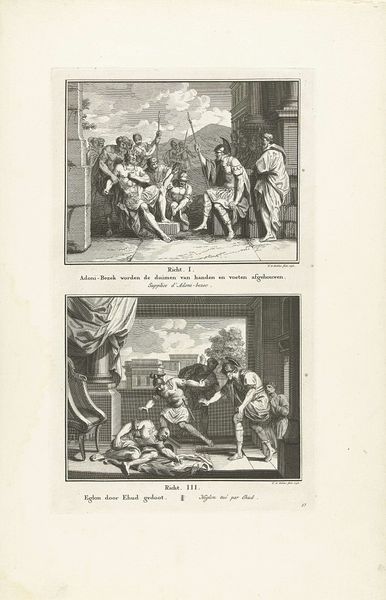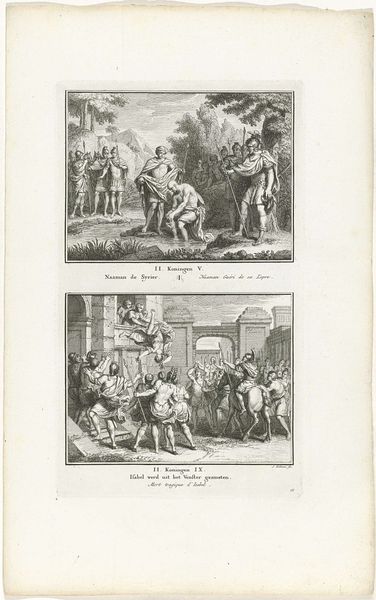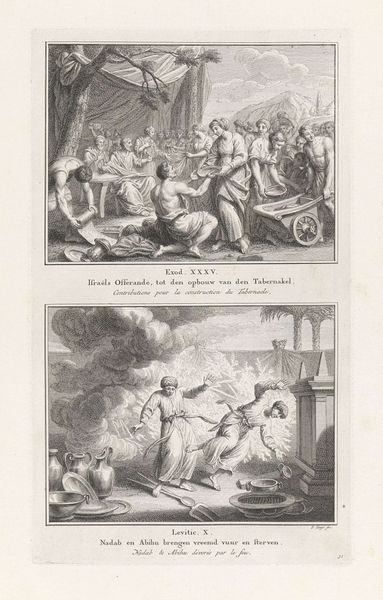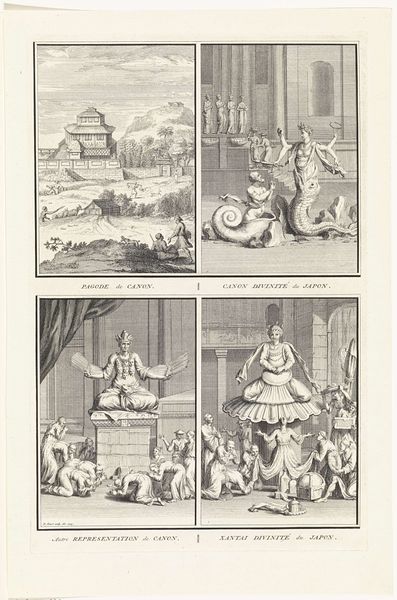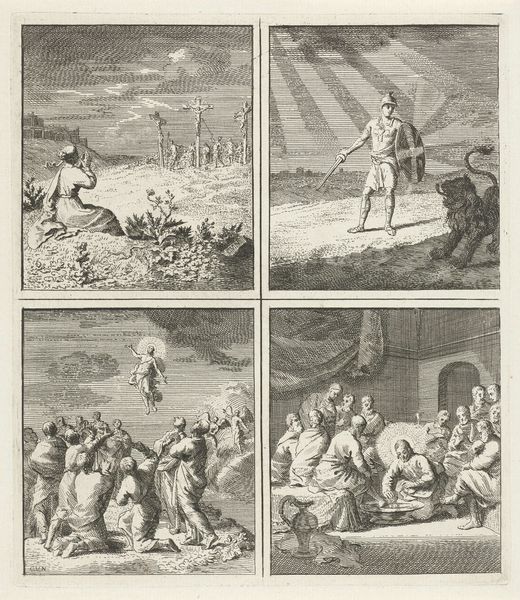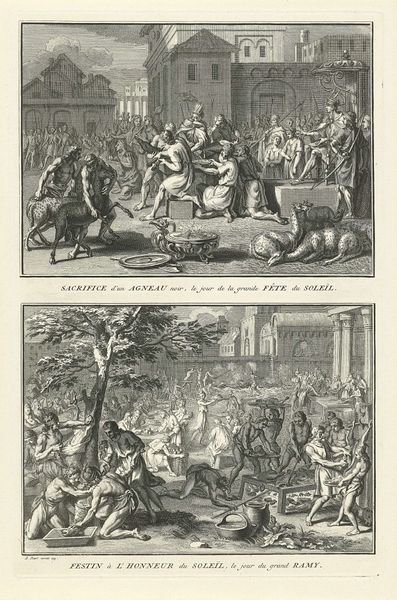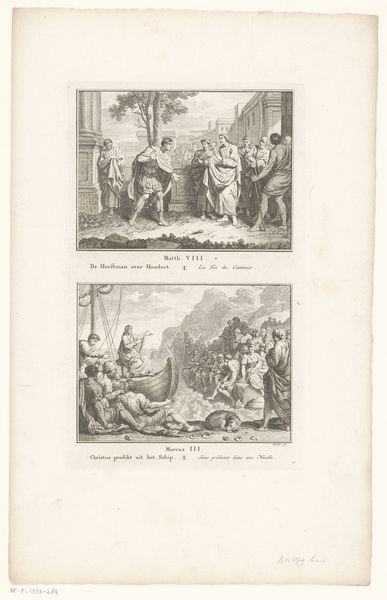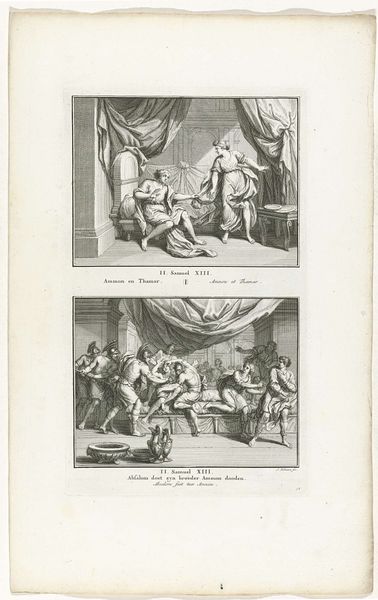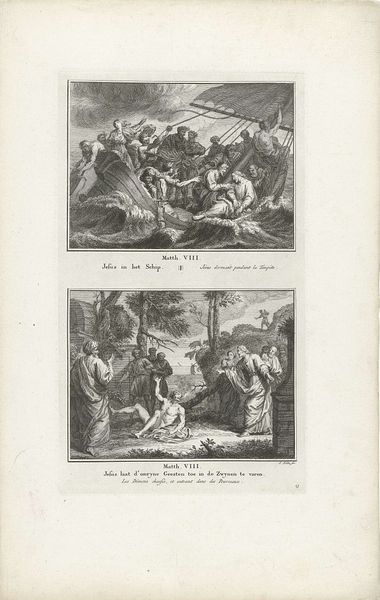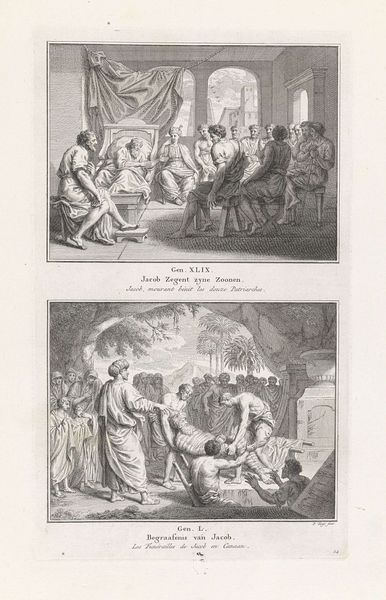
print, engraving
#
baroque
# print
#
old engraving style
#
figuration
#
line
#
history-painting
#
engraving
Dimensions: height 335 mm, width 223 mm
Copyright: Rijks Museum: Open Domain
Bernard Picart created this print, 'Daden van Buth, een Tataarse jongeman' at the turn of the 18th century, using the intaglio process of engraving. Here, a metal plate, likely copper, was painstakingly incised with lines to create this complex composition. The depth and density of these lines determined the darkness and texture of the printed image, demanding remarkable skill and time from the printmaker. Look at the intricacy of details, the precision with which the artist has represented a scene of violence in the upper portion of the image, and devotion in the lower portion of the image, with a statue of 'Manipa Idole'. The image depicts a story of ‘Buth, a furious young man who kills all he meets’, and a ritual sacrifice to the deity ‘Manipa Idole’. As a means of mass production, engraving played a critical role in disseminating information and shaping public opinion. Picart's print serves as a reminder of the labor-intensive processes behind visual communication. The creation of this print highlights the intersection of artistic skill, technological innovation, and the circulation of knowledge in the early modern world.
Comments
No comments
Be the first to comment and join the conversation on the ultimate creative platform.
